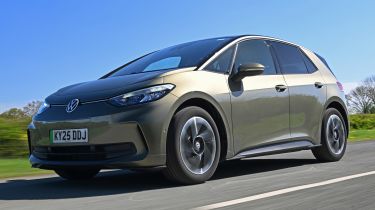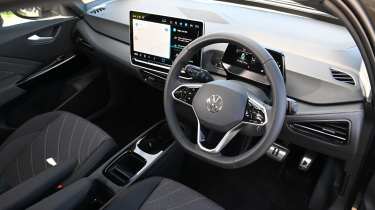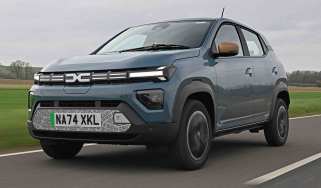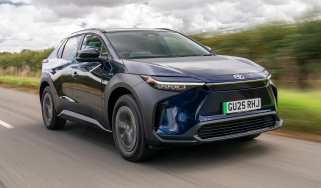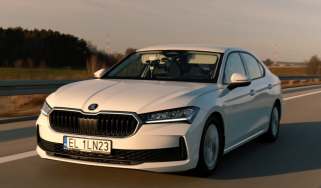New Volkswagen ID.3 Match 2025 review: attractive price boosts EV’s appeal
The value-focused Volkswagen ID.3 Match performs well and is easy to live with

Verdict
Volkswagen didn’t hit the ground running with the ID.3 when it was first launched, but gradual improvements throughout its life have now made it the car it should’ve been nearly five years ago. The latest entry-level powertrain is smooth, performs well and easy to live with every day, while in Match trim it offers all the kit that you really need. Most buyers should be able to live with the range just fine, and those who can’t can still buy a Volkswagen ID.3 with one of several larger battery options – as long as they’re willing to part with more cash.
This is the Volkswagen ID.3 Match. Prices for this new value-focussed trim and powertrain combination start from £32,220 – or about the same as a Golf Style with a 1.5 eTSI auto with a similar level of performance.
That price has no-doubt added appeal to the ID.3 range, which looks like it’s getting better with age. When the Volkswagen ID.3 launched back in 2020, it's fair to say that it wasn’t exactly welcomed with rave reviews. Huge hype from the brand itself, claiming it would be the third in the bloodline of VW legends descended from the Golf and the Beetle, didn’t help build anticipation for a car that left us lukewarm at best.
Used - available now
What must’ve been frustrating for VW’s engineers, who spent a huge amount of time, effort and money developing an all-new fully electric architecture, was that very few of our criticisms had anything to do with the fact that it was electric. Instead, the ID.3 was plagued by a range of small, niggling issues in areas that were previously taken for granted. We’d banged on for decades about how build quality and ergonomics were VW staples, but both were oddly absent.
To its credit, Volkswagen strived to address some of those issues. Take a look inside the latest models, for example – even this Match trim that sits towards the bottom of the ID.3 tree. feels a step up in quality from the earlier cars, with more soft-touch plastics, and smart interior textures lifting the overall ambience from what was offered previously. The ID.3’s open and airy cabin looks and feels smart enough in that typically tasteful VW way.
It has always been impressively spacious, too; there's more room in the back seats than a Golf and the boot is a near-identical 385 litres – even though the ID.3 is a smidge shorter on the outside.
All the sour memories of glitchy, clunky infotainment systems have gone, too. Every model now comes with a 12.9-inch touchscreen, and while physical climate controls are still lacking, the on-screen temperature settings remain a permanent fixture on the base of the display. We’re still baffled by the dual function window switches which control both the front and rear windows – an answer to an ergonomic question that nobody outside of Volkswagen had even thought of asking – and the haptic buttons on the steering wheel still grate a little, too.
The key reason behind the headline price point is the introduction of an entry-level ‘Pure’ powertrain. It makes use of a 168bhp motor and a 55kWh (52kWh usable) battery – that’s 34bhp and 7kWh down on the previous base option, but in reality the specs look more than adequate for the majority of buyers. Officially, it’ll crack the 0-62mph sprint in a very reasonable 8.2 seconds, while range stands at 240 miles.
On the road, it makes a great stab at matching both of those figures. We’ll come onto the range shortly, but acceleration from that motor is more than sufficient; very sprightly in town where many ID.3s will likely spend their time, but with more than enough shove up to motorway speeds, too. While the 168bhp output doesn’t sound like much, it’s the healthy 310Nm of torque that ensures that there’s plenty of punch.
VW’s aim with the ID.3 was always to make it feel very like a Golf to drive, and that was something it got right from the outset. The turning circle is great, visibility is pretty good, while the ride is more composed than in a Renault Megane and the body control is better than a Citroen e-C4 or an MG4. It’s not the most thrilling car to drive in this class, but with the smaller battery pack it’s the lightest option in the ID.3 range, so it feels fairly willing on a twisty road.
That smaller battery won’t have the range for buyers who regularly pound up and down motorways, but even so, a real-world figure of about 4.0mi/kWh – including motorway runs, in temperatures of about 15 degrees – translates into a smidge over 200 miles in the real world. That figure will go down on colder days, but those who drive in suburban areas at lower speeds could quite realistically beat our test numbers. A maximum 145kW charging speed is a little less rapid than the big battery ID.3s but still competitive among other EVs for the money.
And while that Match trim looks tempting value already, there’s an even cheaper version, too. The entry-level Pure Essential kicks things off from £30,860, though we’d ideally stretch to this Match trim if possible, thanks to the extra standard kit it brings. Among its extras over the Essential are 18-inch alloy wheels (in place of wheel trims over steel wheels), two-zone air conditioning (in place of single-zone air con), wireless smartphone charging, a reversing camera, plus a heated steering wheel and front seats.
Buyers who are able to order before the end of May can benefit from an offer which can make the running costs even more miniscule, too. Those that can charge at home already have the potential to slash their running costs, but VW’s deal with Ovo energy will give buyers a full 30,000 miles-worth of free charging (spread over three years) if they’re signed up to Ovo’s Charge Anytime tariff. Even without that offer, a home charge at seven pence per kWh will see buyers pay less than £4 for 200-plus miles of real-world range.
| Model: | Volkswagen ID.3 Pure Match |
| Price: | £32,220 |
| Powertrain: | 52kWh battery, 1x e-motor |
| Power/torque: | 168bhp/310Nm |
| Transmission: | Single-speed auto, rear-wheel drive |
| 0-62mph: | 8.2 seconds |
| Top speed: | 99mph |
| Range: | 240 miles |
| Charging: | 145kW (10-80% in 25 mins) |
| Size (L/W/H): | 4,264/1,809/1,564mm |
| On sale: | Now |

